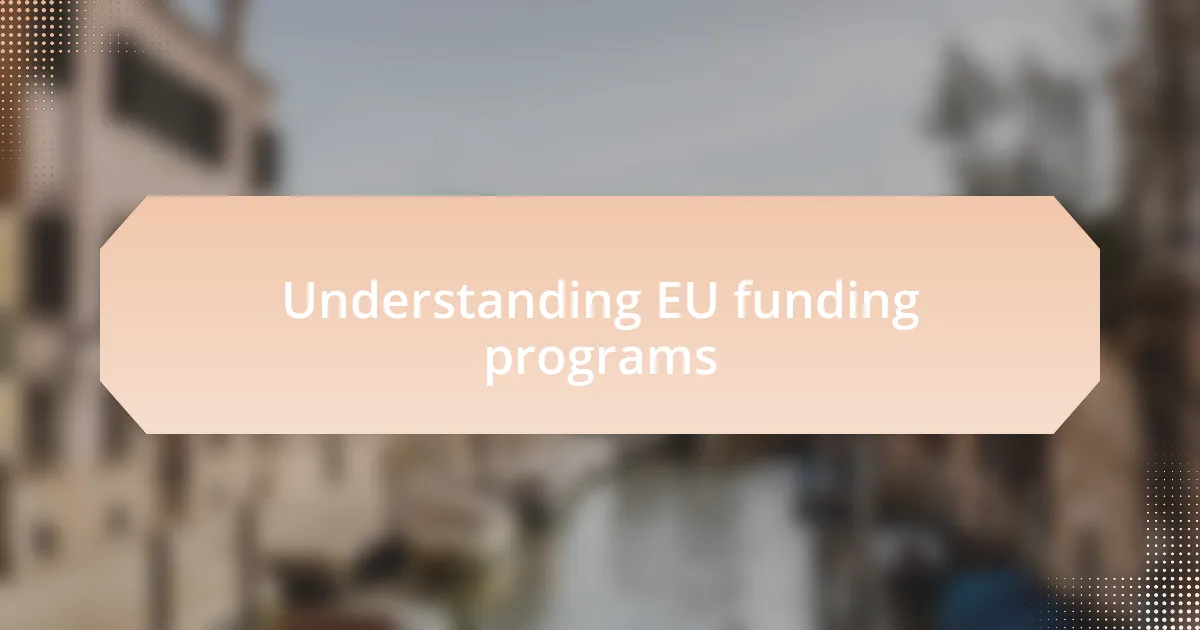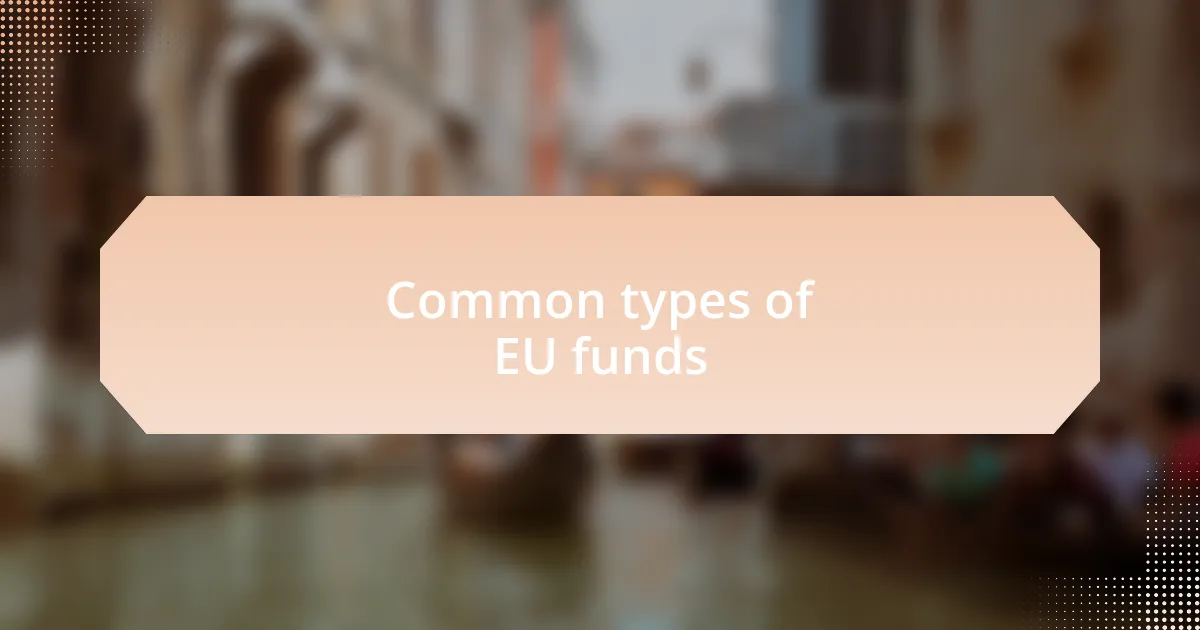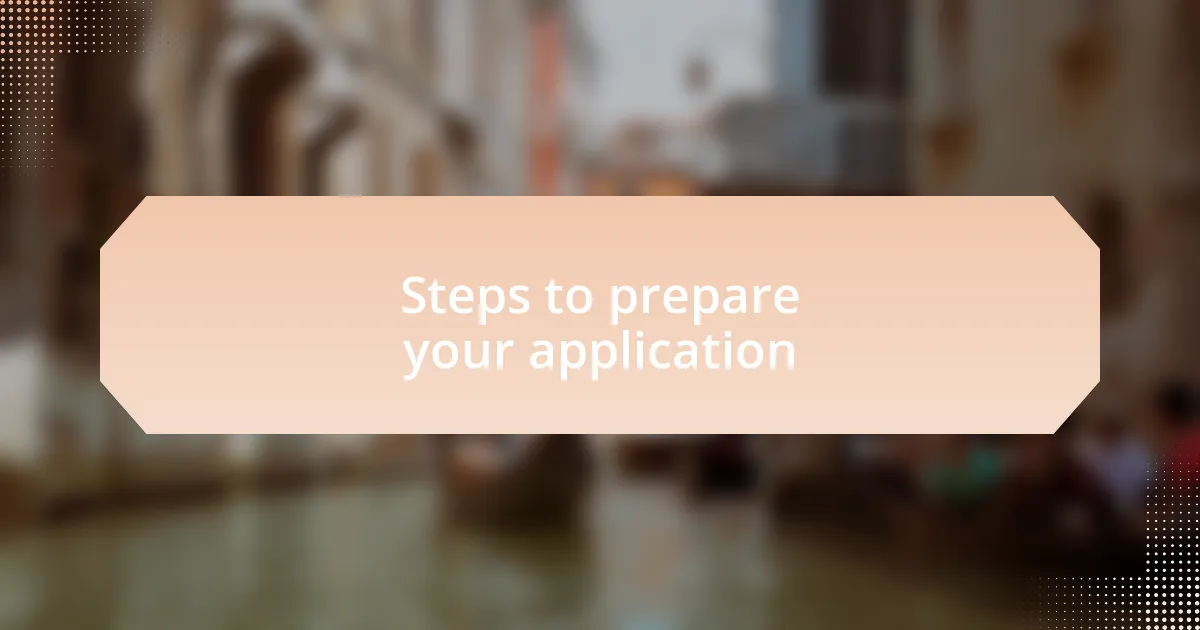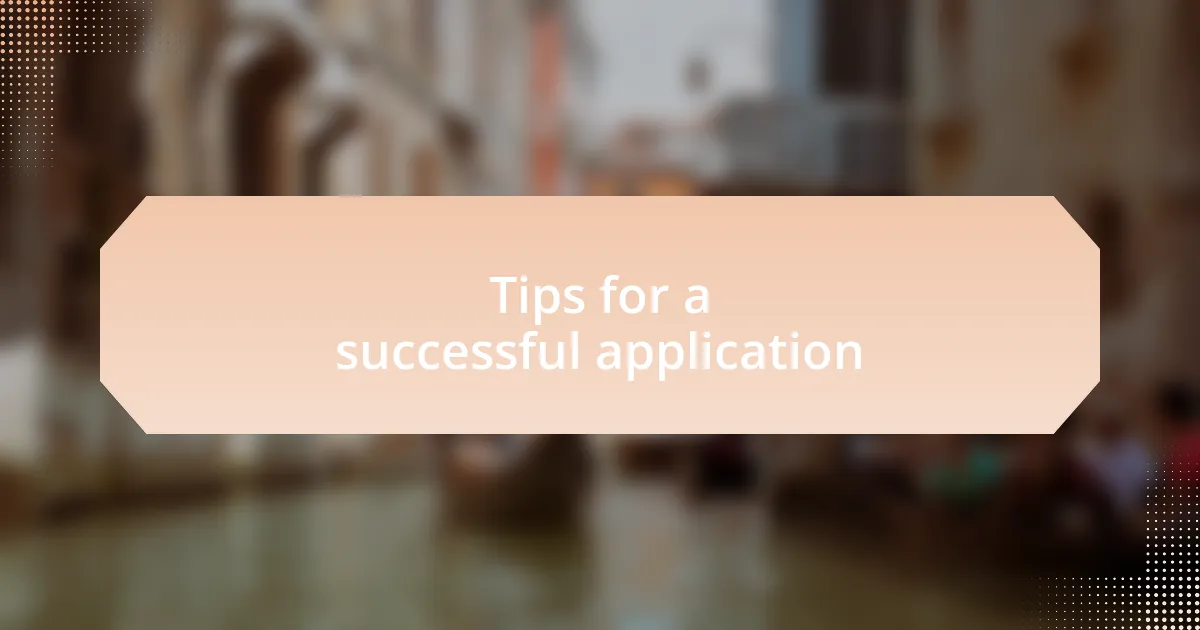Key takeaways:
- Understanding EU funding programs requires familiarity with objectives, eligibility criteria, and application processes, which can lead to valuable collaborations.
- Applying for funds offers transformative opportunities, validates initiatives, and fosters networking that can enhance future projects.
- Eligibility criteria often focus on specific organizational types and financial stability, emphasizing the need for tailored proposals that meet funder requirements.
- Successful applications involve thorough research, comprehensive documentation, compelling narratives, and alignment with funder priorities to make a strong impression.

Understanding EU funding programs
Navigating EU funding programs can feel overwhelming, especially if you’re not familiar with the landscape. I remember the first time I tried to understand the various funding mechanisms; I was puzzled by the sheer number of options available. Each program has its own objectives, eligibility criteria, and application processes that must be thoroughly understood before diving in. Have you ever felt lost in a maze of opportunities?
The EU offers a range of funding programs, from those focused on research and innovation to initiatives aimed at supporting cultural projects. It’s essential to recognize that these programs are not just about financial aid; they are strategic tools to foster collaboration across member states. I’ve seen how funded projects often lead to unexpected partnerships and innovative ideas that benefit entire communities, which really opens your eyes to the potential of these programs.
Timing can be crucial when it comes to applying for EU funding. I vividly recall a project I was involved with that missed the application deadline by just a week. It was a tough lesson in the importance of staying organized and informed about the funding schedules. Do you find that managing deadlines is one of the most challenging aspects of applying for grants? It certainly can be; however, understanding the timeline can significantly increase your chances of success.

Importance of applying for funds
Applying for funds can be transformative for individuals and organizations alike. I remember a small community project that seemed like it was stagnating in its early stages, yet once they secured EU funding, it unlocked new resources and energy. It was fascinating to witness how that financial boost reinvigorated the team, allowing them to dream bigger and execute their plans more effectively. Have you experienced a similar moment of breakthrough after securing support?
Moreover, the importance of applying for funds extends beyond mere financial support; it also serves as a validation of your ideas and initiatives. I’ve often felt that the very process of writing a proposal forces you to clarify your vision and goals. This introspection can lead not just to stronger projects but also to newfound confidence in your capabilities. How often do you take the time to articulate and refine your objectives? That focus can make a significant difference.
Lastly, funding applications often pave the way for networking opportunities that can be invaluable for future endeavors. I recall attending a funding workshop with other applicants; the connections I made there led to collaborations I hadn’t even imagined. It struck me how a single application can create a ripple effect, expanding your professional circle and opening doors that were once closed. Isn’t it thrilling to think about how a simple application can lead to such profound changes?

Key eligibility criteria for funds
When exploring the eligibility criteria for funds, it’s essential to consider the specific requirements set by the funding body. For instance, I remember one project that I worked on had an extensive list of criteria, including the need for a well-defined target group and measurable objectives. It really made me reflect on how crucial it is to tailor your proposal to meet those specifications.
Additionally, many funds focus on certain types of organizations, such as non-profits or educational institutions. I once encountered a foundation that exclusively supported projects led by youth organizations. This experience taught me the importance of thoroughly researching potential funding opportunities to ensure alignment with your mission. Have you ever found a perfect fit only to realize you didn’t meet the organizational criteria?
Lastly, the financial stability of your organization often plays a role in eligibility. I recall a time when my team struggled to demonstrate our sustainable funding model, which ultimately impacted our application. This situation highlighted for me how crucial it is to present a strong financial foundation, as it reassures funders of your project’s longevity and viability. How prepared are you to showcase your organization’s financial health in your applications?

Common types of EU funds
EU funds come in various forms, each designed to support different areas of development. For instance, I’ve worked with the European Social Fund (ESF), which primarily aims to promote employment and social inclusion. I found it fascinating how this fund encourages projects that help vulnerable groups find meaningful work, reflecting the EU’s commitment to social equity.
Another significant area is the European Regional Development Fund (ERDF), which focuses on reducing disparities between EU regions. I once applied for an ERDF grant to enhance local infrastructure in a rural area. The experience taught me that well-documented local needs and potential impacts can significantly strengthen your application, especially when regional development aligns with EU priorities.
Lastly, the Horizon Europe fund stands out for its emphasis on research and innovation. I remember collaborating on a project proposal under this fund, and it was thrilling to see how competitive the process was. Have you explored how your innovative ideas could fit into the broader EU research agenda? Engaging with such programs not only fuels advancement but also offers an opportunity to contribute to Europe’s global leadership in research.

Steps to prepare your application
To prepare your application, begin by thoroughly researching the specific fund you wish to apply for. Understanding the fund’s objectives and priorities can significantly shape your proposal. I vividly remember pouring over guidelines for a proposal I drafted; it was eye-opening to see how every detail mattered. Do you have a clear grasp of what the funding body truly values?
Next, gather all necessary documentation early in the process. This includes a detailed project plan, a budget outline, and any supporting letters or partnerships. I once underestimated the time it would take to coordinate all these elements, and it nearly derailed my application. Have you lined up the right resources and alliances to support your proposal?
Finally, draft your application with a strong narrative. Articulate your project’s goals and expected impact compellingly. It’s not just about what you plan to do, but why it matters. When I framed my stories around the community benefits, I noticed the reviewers were more engaged with my proposal. What unique story can you tell that will resonate with those who read your application?

Tips for a successful application
When submitting an application, making a strong first impression is critical. I remember the time I invested in crafting a compelling executive summary; it was a game-changer. How do you think your opening lines will capture the reviewer’s attention? A succinct, engaging summary that highlights the essence of your project can set the stage for a successful application.
Pay attention to the funder’s language and style in their guidelines. I’ve learned that mirroring their terminology shows you understand their priorities and are aligned with their goals. Does your application reflect the values and mission of the funding body? It’s crucial to ensure that every section resonates with their expectations while maintaining clarity in your proposal.
Lastly, seek feedback from peers or mentors before submission. I often share drafts with colleagues who bring fresh perspectives and catch errors I might overlook. Have you considered how an outside opinion might strengthen your application? Incorporating constructive criticism can enhance your proposal’s overall quality and increase your chances of success.